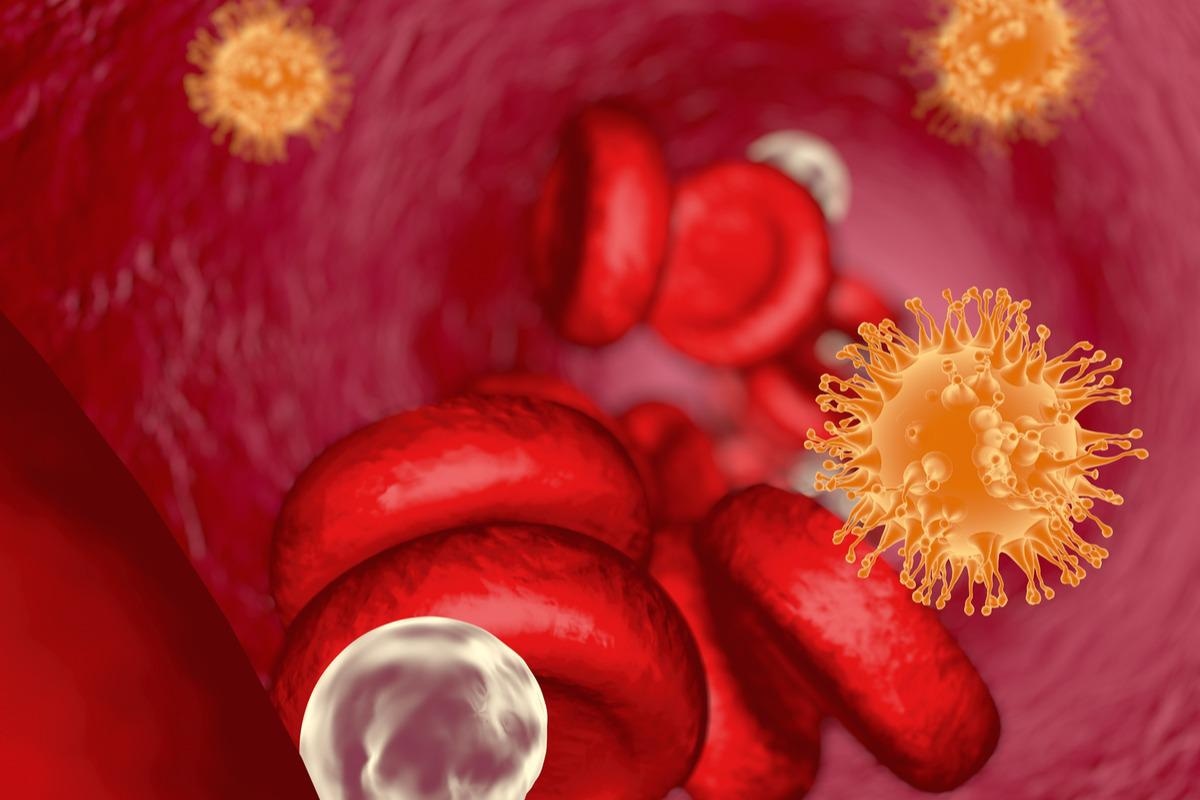Viral infections are a significant global health threat necessitating the prioritization of limited healthcare resources to manage dangerous viral outbreaks. A noninvasive prognostic biomarker derived from the host is vital for predicting risk during a pandemic caused by a novel virus. Red blood cell distribution width (RDW) is one such biomarker. It is an index of a red blood cell size disorder called anisocytosis and can serve as a potential predictive biomarker for disease severity.
 Study: Red blood cell distribution width as a prognostic biomarker for viral infections: prospects and challenges. Image Credit: Illustration Forest/Shutterstock
Study: Red blood cell distribution width as a prognostic biomarker for viral infections: prospects and challenges. Image Credit: Illustration Forest/Shutterstock
A review published in Biomarkers in Medicine highlights the prospects and challenges of RDW as a predictive biomarker for viral infections, with a special focus on coronavirus disease 2019 (COVID-19) and hepatitis. The findings of the review offer an approach to improve the prognostic performance of RDW for the prediction of risk in viral diseases.
About the study
In this review, the authors analyzed several studies focusing on the potential use of RDW as a prognostic biomarker for severe disease and/or mortality caused by various malignancies, including multiple myeloma, lung cancer, ovarian cancer, and hematological malignancies. Many studies also reported that RDW is a predictive biomarker for cardiovascular disease, renal disease, and pre-eclampsia, highlighting the role of RDW as an emerging diagnostic or prognostic indicator of a broad range of noncommunicable diseases.
The review also examined several other studies that have explored RDW as a diagnostic or prognostic biomarker of viral diseases such as hepatitis B, HIV/AIDS, Epstein–Barr virus infectious mononucleosis, and COVID-19. A significant elevation in RDW has been reported in patients with chronic hepatitis B infection. Studies also showed that an increase in RDW is associated with viral load in chronic hepatitis B disease patients. One study involving chronic hepatitis B patients and healthy controls observed that RDW could differentiate hepatitis B-related cirrhosis in active and inactive infections.
RDW can predict COVID-19 morbidity and mortality
The review found that RDW elevation in patients with severe COVID-19 has been reported in several studies. Some recent studies on COVID-19 patients observed that RDW was the only routine complete blood count parameter that was significantly associated with mortality and showed predictive significance as an independent risk factor.
In a Spanish observational study of COVID-19 patients admitted to intensive care units, RDW was significantly associated with 30-day mortality. An RDW cut-off value of 13.5% was a predictor of 30-day mortality related to COVID-19, with 80% sensitivity and 59% specificity, while a cut-off of 14.5% had 72% sensitivity and 81% specificity.
The authors found that the sensitivity and specificity of RDW in predicting the severity and mortality related to varied between studies, possibly due to differences in study design or clinical and/or demographic characteristics of the patients. This highlights the importance of standardizing existing protocols to evaluate RDW as a prognostic biomarker for COVID-19. In terms of diagnostics, RDW could differentiate between COVID-19 and other types of pneumonia.
Limitations
Despite the effectiveness of RDW as a predictive diagnostic marker of various diseases, there are currently some limitations in the universal use of RDW to predict disease prognosis. Some technical limitations include challenges in establishing a universal RDW reference range and the lack of global consensus on how to express RDW. In terms of biological limitations, RDW is affected by several factors, including anemia, thyroid dysfunction, malnutrition, vitamin or mineral deficiencies common to many diseases. This reduces the specificity of RDW as a predictive biomarker for disease progression. Since RDW increases with age, patients’ age is a confounding factor in the use of RDW for the prediction of viral disease prognosis.
Conclusions
The findings of the study demonstrate that RDW is an emerging prognostic indicator of several diseases, including viral infections. RDW can predict the severity and progression of viral hepatitis and COVID-19 with high sensitivity and specificity. It is a cost-effective and accessible parameter that can help reduce morbidity and mortality in the developing world, where resources are scarce. Further research focusing on overcoming the current limitations is necessary to ensure the universal application of RDW as a predictive prognostic biomarker for emerging viral infections.
Given the economic burden of managing viral diseases such as COVID-19, there is a pressing need for early prediction of individuals likely to develop severe complications. According to the authors, after circumventing the limitations of using RDW, it could revolutionize the prediction of viral disease prognosis and help develop appropriate and timely medical interventions.